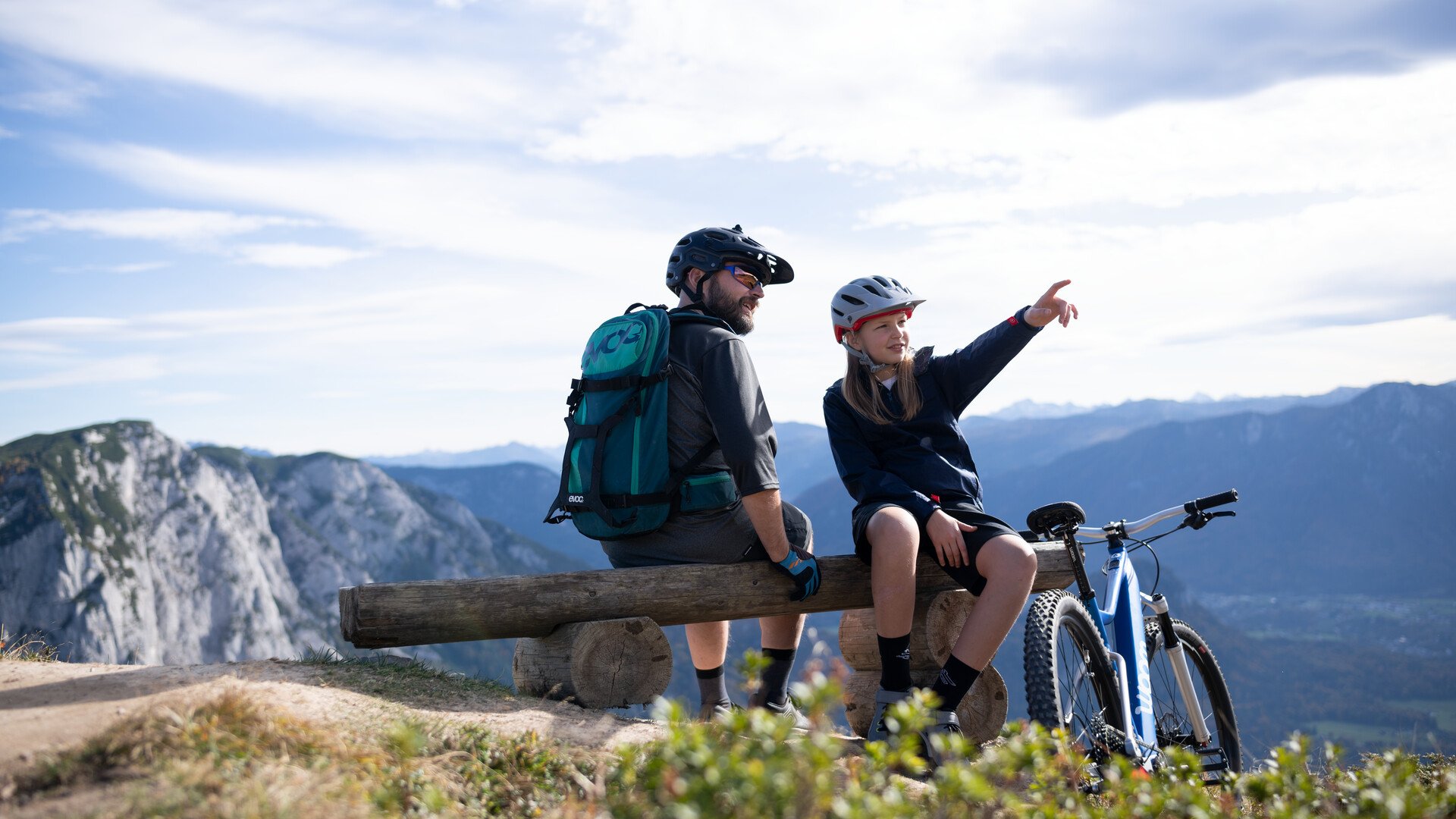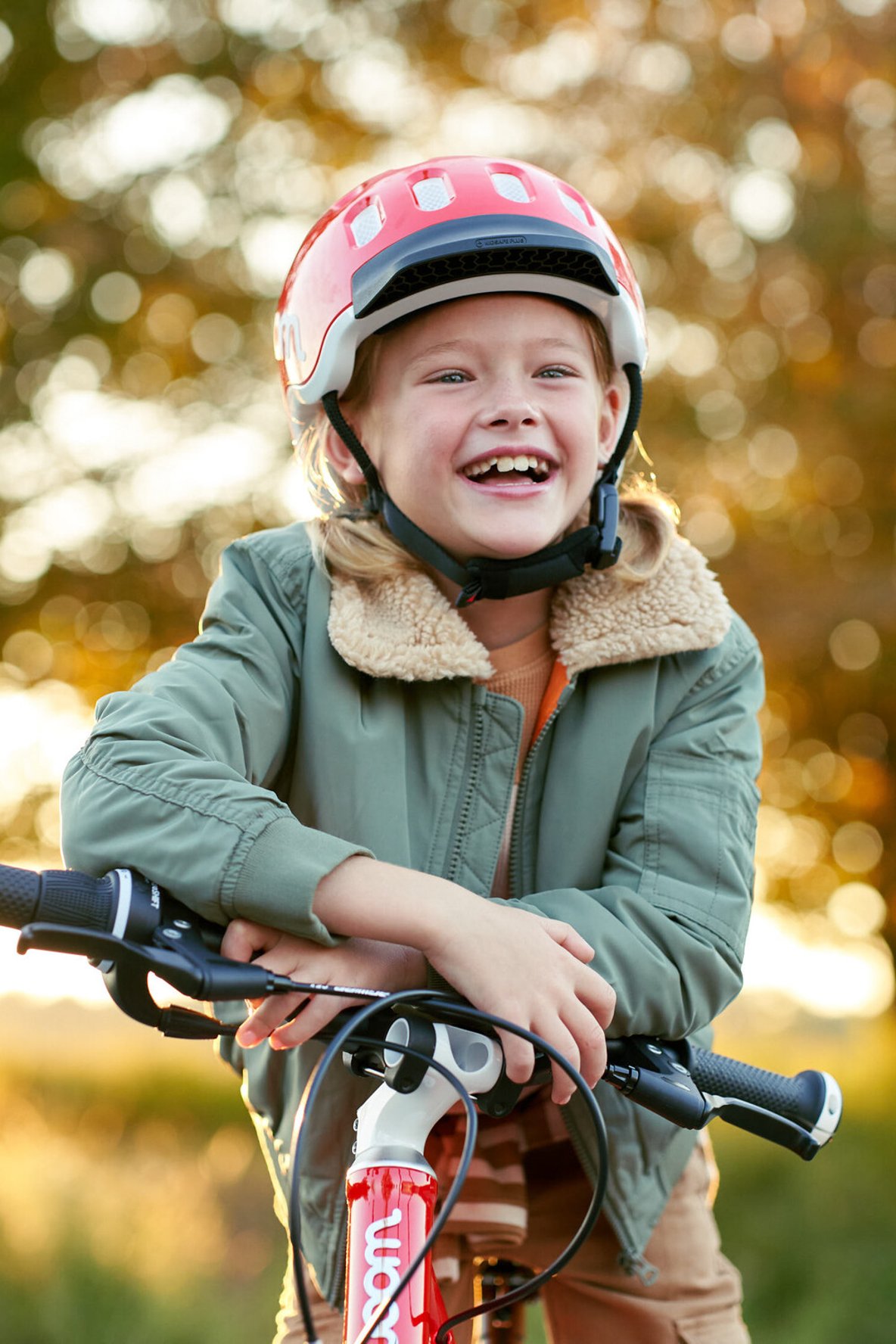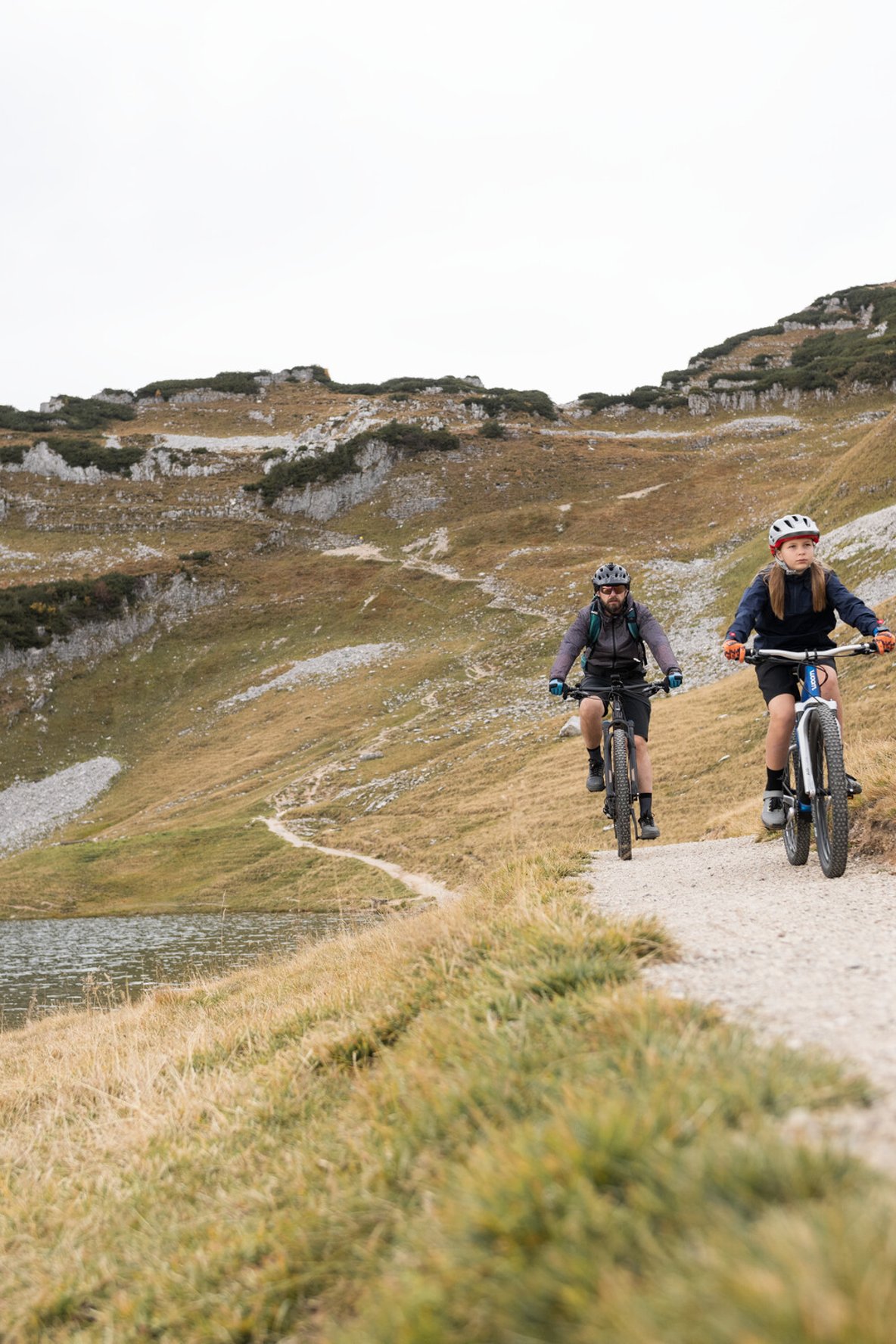Bike riding in autumn and winter – five tips to stay cold-free


Wind, cold, water – and the first cold comes knocking. We parents know the drill: when the days get short and the mercury drops, little noses start to run. But that doesn't mean the bikes need to be put away for the winter. Moderate exercise in the fresh air boosts the immune system and even in the cold season is healthy for you and your child.
We asked general practitioner and mother of two Dr. Katrin Baumgartner to offer us some tips on how to get through the autumn and winter while keeping colds to a minimum. "Colds are fairly common among children because their immune systems are not fully developed and continue to learn with each new infection. Each of these new infections strengthens the child but can be disheartening for the parents out of concern for their children. This can often make moms and dads a bit hesitant about taking outdoor excursions. Once they've overcome this small hurdle parents realize that it does everyone good and that a lot of these concerns turn out to be unfounded."
To start with, let's address an important question: Why do children get colds so easily?
Colds are triggered by any one of around 200 different cold viruses. Rhinoviruses are a common culprit. These "runny nose and cold viruses" occur year-round (even in the warmer seasons).
During the autumn and winter months, there is a tendency to hunker down and move many activities inside. More contact with other children in enclosed spaces increases the risk of infection. Humidity is also significantly lower in the cold season. Added to this is the fact that when they're busy romping around and playing children often forget to drink. Taken together, these factors result in a drying of the mucous membranes which makes us more susceptible to catching cold. The job of the mucous membranes is to act as a natural barrier against viruses and bacteria. When these membranes dry out, it is much easier for pathogens to make their way into our bodies and spread.
Here are our top 5 expert tips for your autumn and winter bike rides:
1. How warm should I dress my child for bike riding in autumn or winter?
The challenge is striking the right balance. Your child should not catch a chill from the wind but also should not immediately break a sweat from the occasional full-on sprint. At the same time, your child needs adequate freedom of movement – a bike ride in stiff wet-weather gear is no fun at all.
Also, children have their own unique perception of cold and heat; not every child feels cold or warm at the same time. Important: Take care not to project your own sense of temperature on your child. And try not to bundle up your young riders too much – they are in motion, after all, when riding their bikes – otherwise they can get overheated under their clothing. A better alternative is to take along an extra layer of clothing. When you stop for a break, you can dress your child in a cozy fleece vest, for example. This helps to keep the chills at bay even if your child has broken a light sweat while riding.
As with hiking, the onion principal is a proven technique; that is, layering different articles of clothing, one on top of the other. Natural fabrics such as wool walk (boiled wool), which block wind and regulate temperature by wicking moisture away from the body are ideal for the autumn and spring. This is something the product designers at woom have also considered. The OFF Longsleeve Jersey in a super-soft bamboo fabric is designed to withstand whatever the weather throws at your child. The FLARE Vest fends off cool winds and light rain, whilst increasing your child's visibility on grey and gloomy days with its reflective print. Make sure you select the next size up for your child so they can pop it over their winter coat. In addition to a light knit cap worn underneath the helmet, a tube scarf can help ward off colds when the mercury drops: pulled over the mouth and nose, it prevents cold air from directly entering the lungs.
By the way, children tend to let you know when they're chilled or have cold fingers. If you want to find out whether your child really is warm enough, just place your hand on their neck or between their shoulder blades. As long as those areas are not cold to the touch there is no cause for concern. Cold hands and feet are not necessarily a sign that your child is chilled.
2. Does bike riding in the cold stress the immune system?
Dr. Baumgartner offers reassurance to parents concerned that cold-weather cycling might be exhausting or even place undue stress on a child's immune system. "Moderate exercise in cool air is fun and energizing. It trains the body, which strengthens the immune system." Key point: make sure there is a good balance between moderate exercise and adequate sleep in combination with the right nutrition. What exactly does that mean?
- Exercise: A child's need to exercise does not switch off in the cold season, of course. In cold weather, kids still need fresh air and physical activity every day – that should not be news to anyone. Whether a child's bike is a daily companion to school or used for short rides, moderate cycling is ideal for activating the child's body and staying fit during the cold months.
- Sleep: Once activated through bike riding your child's body needs time to regenerate by sleeping. At night, the whole body recovers when the parasympathetic nervous system, a part of the autonomic nervous system, is active. Its purpose is to build up reserves within the body. The heart rate slows down and the digestive system is reduced to a minimum necessary to put the body in a state of rest. In addition, growth hormones critical to your child's development are released at night. The benefits of a bike ride are obvious: through physical activity, your child develops a healthy tiredness and generally falls asleep more quickly. The immune system can only work the way it's supposed to when a person has adequate sleep.
- Nutrition: To maintain a constant temperature in cold weather the body has to be supplied with energy. People tend to be hungrier in the cold months as their calorie requirement increases – that goes for grown-ups and children. The immune system also needs certain trace elements to strengthen its defenses against pathogens. Among these are zinc, selenium, vitamin C and vitamin D. Nuts and seeds, rolled oats, chicken with rice and dates all contain large amounts of zinc and selenium. Blood oranges, lemons, rosehips and vegetables in the cabbage family all have large amounts of vitamin C. Fatty fish contains vitamin D, the "sun vitamin", which our body cannot produce on its own without sunlight. Warming, freshly prepared meals like a lentil stew or chicken soup are ideal for supplying your young cyclist with strength and energy. In the morning, a breakfast porridge is just the thing to prepare your child for the ride to school or kindergarten.
3. How do I plan a bike trip in the cold season?
It is best to plan your bike trip on a day when mom and dad have adequate time. Along with the right clothing, it pays to take a few preventative preparations on cold days.
- Be sure to take along a hot drink on your bike trip – unsweetened tea fills the bill nicely. It's best to give your child something to drink before taking off because, as we mentioned before, when the weather is cold it is important to keep those mucous membranes moist.
- A hot meal really hits the spot after the excursion. Ideally, a big pot of soup or rice pudding sprinkled with cinnamon prepared ahead of time is ready to eat ;)
- With a hot bath you can kill two birds with one stone – it is sleep inducing and the vapor will keep mucous membranes moist.
If you take such an excursion one or two times a week the routine will soon become a ritual that your child will look forward to. "Fixed routines have proven health benefits as they reduce stress and give children a sense of security by letting them know what's coming", says Dr. Baumgartner.
4. Bike tour in the autumn or winter: What do I need to keep in mind when selecting a route?
Just a couple of days ago the kids were running around in shorts in the garden, and now, suddenly, it's time to bundle up! Don't underestimate a sudden temperature drop as it demands additional energy from small, growing bodies. "Autumn and winter are times to slow down the pace", explains Dr. Baumgartner, "Don't pack too many activities into a single day, and pay special attention to both your children and yourself." When bike riding with your child, that means:
- Take it down a notch: Rather than taking an extended bike tour you should limit bike rides on cold days to short rides so that you don't overtax your child. With cold hands and flagging concentration it's easy to have a little accident. Once that happens, your child may not have much interest in riding, and you might as well put the bike away for the winter.
- Familiar routes: Keep in mind that your child first has to get used to the weather conditions – that is, lower temperatures and wet riding surfaces. The brakes can also have a different feel in the cold than in the summer. Rather than exploring new routes, it is better to stick to familiar paths from the summer. That gives your child a sense of security while making the trip easier to plan for mom and dad. Little bicycle games thrown in here and there make for added fun, and they train concentration and coordination.
- Recovery: If you've taken points 1 and 2 to heart, bike riding will become a great way for your child to relax, especially after a long day in kindergarten or school. In a park or forest, your child can simply cruise and enjoy the peace and quiet without having to talk so much.
5. Does bike riding in the autumn and winter provide satisfaction?
The gray skies that hang over the city or countryside for hours, or sometimes days on end, often make it difficult for us to tame our inner sloth and get outside. At such times a group bike adventure out in nature can be just the thing to liven up a dreary day. In the autumn in particular, nature holds a treasure trove of delightful experiences: bike riding with the crackle of leaves under your tyres, collecting chestnuts or keeping an eye out for wild game – all this offers variety, fun and relaxation. In the process, the body releases generous quantities of happiness hormones to keep children satisfied and balanced and help keep their bodies healthy.
"With the right preparation and by paying attention to conditions, bike riding can give kids a major strength and energy boost", says Dr. Baumgartner, summing up, "Depending where you live, bike season can last the whole year round. But of course, safety always comes first, and if weather conditions make a bike tour infeasible, it's better to abstain from the beloved bike and make yourself comfortable on a cozy living room sofa or a warm bedroom."
Katrin Baumgartner works as a general practitioner and occupation
al therapist in Vienna. Regular activity and exercise are very important to her and she tries to model this in her daily routine and in talks with her children.



